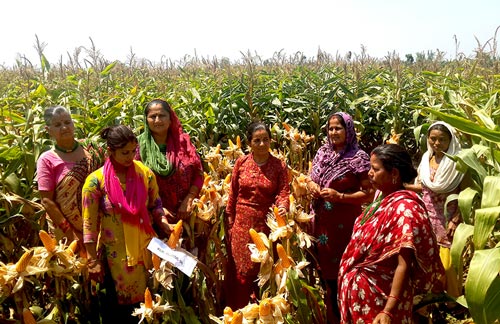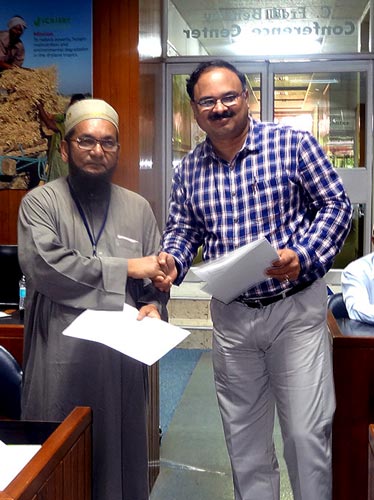Improved wheat varieties developed using CGIAR breeding lines, either in cross-pollinations or as direct releases, cover more than 100 million hectares — nearly two-thirds of the area sown to improved wheat worldwide, new research (Lantican et al., in press) shows. Benefits in added grain from CGIAR wheat research range from $2.8 to 3.8 billion each year — a very high return for the work’s annual, public funding of only $30 million, according to the full-length study. Consistent and secure funding is crucial to maintain the research and institutional capacities required to deliver such impact, particularly given the mounting challenges facing wheat food security and farm livelihoods in developing countries.
According to the study, the impacts derive largely from research and development activities conducted by the International Maize and Wheat Improvement Center (CIMMYT) and the International Center for Agricultural Research in the Dry Areas (ICARDA), both members of the CGIAR Consortium of agricultural research centers, with support from the CGIAR Research Program on Wheat (WHEAT) and partners worldwide including national research programs, advanced research institutes, and private companies.
Findings show that since 1994, farmers globally have enjoyed access to 4,604 improved wheat varieties and that there is continued and significant use in the developing world of CIMMYT and ICARDA wheat lines, which are bred and shared freely through international partnerships. CIMMYT-derived varieties alone cover as much as 80% of the wheat area in South Asian countries and, in sub-Saharan Africa, more than 90% of the area in Kenya and in Ethiopia.
More than a quarter of all wheat varieties and 40 percent of all spring wheat varieties released in this century contain CIMMYT germplasm.
In addition to profiting farmers in the developing world, where CIMMYT and ICARDA’s efforts are focused, the surplus grain produced also benefits wheat consumers — particularly the poor who spend a large portion of their income on food — according to evidence cited.
Specifically, the authors made reference to the study of Stevenson et al. (2013), published in the Proceedings of the National Academy of Sciences, which showed that, in the absence of CGIAR wheat improvement, global wheat prices would have been 29-59% higher in 2004 than they actually were.
Evidence also shows that elite wheat lines from CIMMYT or ICARDA are immediately useful for most wheat improvement programs worldwide and that their use saves a decade or more of cross-breeding for those programs. Moreover, far from representing a bottleneck in diversity, breeding stocks from the two centers have significantly enhanced the genetic diversity of improved wheat, particularly for critical traits like yield potential, grain processing quality, disease resistance, and early maturity, according to research cited by the authors (Warburton et al. 2006; Huang et al. 2015, pp. 13-14).
Finally, in contrast to the commonly-held belief that modern varieties are less resilient than farmers’ traditional varieties, the authors cite the study by Gollin (2006) showing that the increased use of improved wheat varieties over the past 40 years has made grain yields more stable and actually reduced farmers’ risk.
In addition to leading the world’s largest publicly-funded wheat improvement networks, CIMMYT and ICARDA delivering impact through extensive partnerships and longstanding research on productive and sustainable cropping practices. Crucial to their success are initiatives that foster farmers’ access to quality seed of new varieties and capacity-strengthening activities that target individuals and partner institutions. Notably, the two centers maintain, study, and share seed collections of wheat genetic diversity comprising nearly 200,000 unique samples wheat landraces, improved varieties, and wild relatives.
The new study proves that international collaboration on wheat research continues to provide the impressive returns on investments, as occurred during the 1960s-70s. Wheat breeding impacts at that time helped to spark the Green Revolution from which the 15-member CGIAR arose and to keep food prices at historically low levels for decades (Evenson and Gollin in Science, 2003).
Wheat farming in an age of changing climate and shifting markets
Although the costs of basic food commodities have fallen recently, they are still well above the decades-long, stable levels that preceded the 2008 food crisis. Worse, despite low grain prices, global stocks have shrunk 30% from levels at the outset of the millennium (Brown, L.R. 2012. Full Planet, Empty Plates; The New Geopolitics of Food Scarcity.). Reverberations of relatively local disturbances, like droughts or crop disease outbreaks, now cause inordinate price spikes and worsen food insecurity for the world’s poorest.
Looking forward, by 2050 the current global population of 7.3 billion is projected to grow 33 percent to 9.7 billion, according to the United Nations. Demand for food, driven by population, demographic changes and increasing global wealth, will rise more than 60 percent, according to a recent report from the Taskforce on Extreme Weather and Global Food System Resilience. Wheat farmers must meet this rising demand from the same or less land area, while confronting more extreme and erratic rainfall and temperatures and using inputs like water and fertilizer much more effectively.
As the world’s policymakers begin to acknowledge the interconnected nature of food, energy, water, and peace, every effort made to improve global food security is an investment in the future of humanity. Food insecurity drastically affect all sectors of society; either through hunger, high food prices, or social conflicts that send massive waves of desperate refugees in flight.
Farmers have met repeated food security challenges since the Industrial Revolution, with the support of science and focused development efforts, but science and development require investment. Wheat breeding and crop management research have long horizons – typically, for example, it takes much more than a decade for a variety to go from initial crosses to farmers’ fields.
The requisite research and institutional capacities for this work also take years to develop, but can be lost very quickly in the absence of committed policy support and consistent and secure funding. Publicly-funded wheat research barely has the resources to maintain the essential breeding and capacity building activities that underpin the impacts documented in this new publication, which will be released in November 2015 and aims to set the record straight on the magnitude of CGIAR contributions to global food supplies.
As of 2015, CIMMYT and ICARDA have agreed to operate their wheat research as a single joint program. They are struggling to find support for work on new technologies, such as advanced phenotyping platforms for heat and drought tolerance, or advanced global consortia focusing on traits that dramatically raise the genetic yield potential of wheat. Those and other tools and initiatives will be crucial for public wheat breeding research to partner effectively with the private sector and keep step with societal demands for food security and nutrition.
Funded through the CGIAR Wheat Research Program, the study is based on a survey sent to 94 countries that produce at least 5,000 tons of wheat each year. Responses came from 66 wheat-growing countries — 44 of them developing countries that account for nearly all the developing world’s wheat output. Survey data were complemented with information from published wheat varietal guides, figures on wheat varietal area insured or grown, papers in scientific journals, technical bulletins, and on-line sources including the US Department of Agriculture National Agricultural Statistics Services (USDA-NASS), the Annual Wheat Newsletter, and wheat area, production and yield statistics from the Food and Agriculture Organization of the United Nations (FAO). The study updates results of Lantican et al. (2005).
Lantican, M.A., T.S. Payne, K. Sonder, R. Singh, M. van Ginkel, M.Baum, H.J. Braun, and O. Erenstein. In press. Impacts of International Wheat Improvement Research in the World, 1994-2014. Mexico, D.F.: CIMMYT.




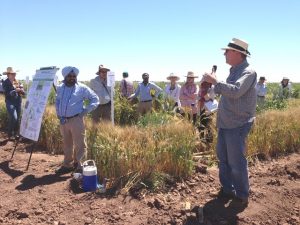
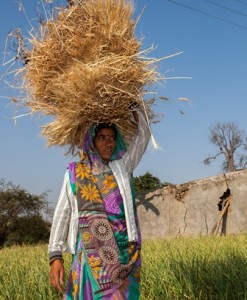
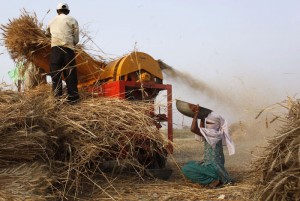

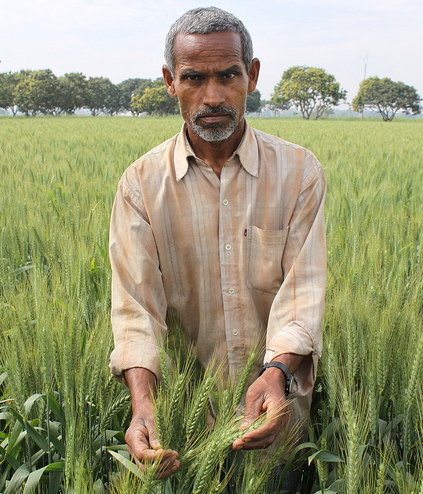
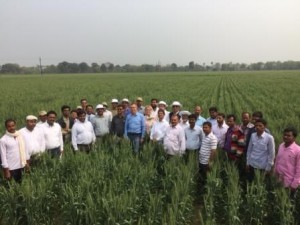
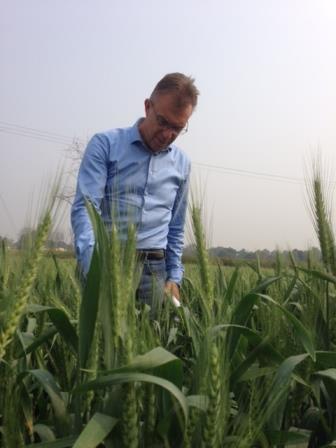
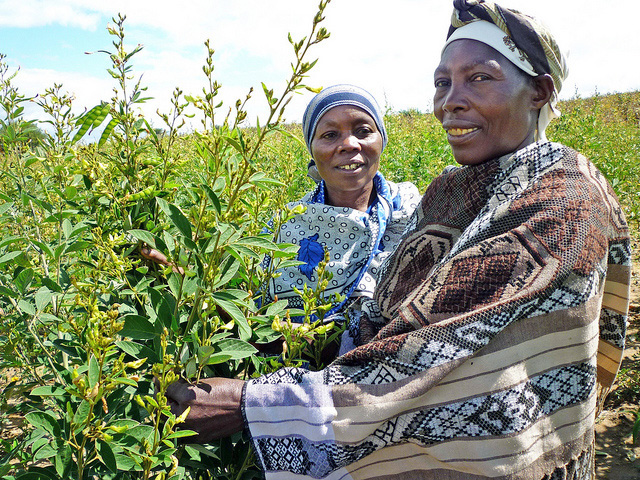
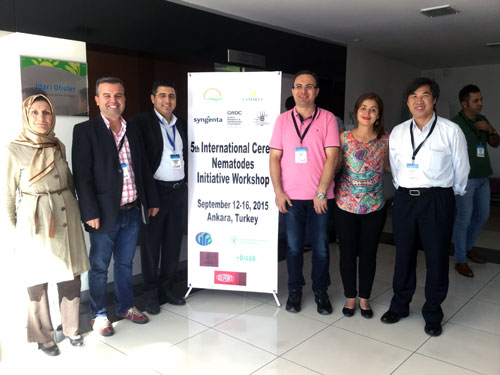
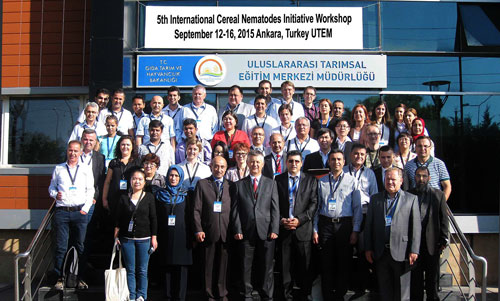
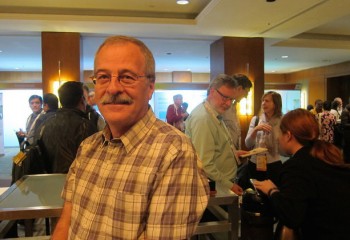
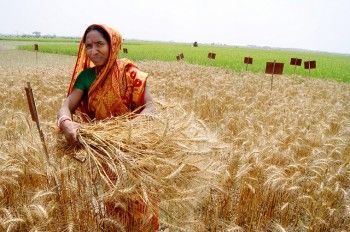
 CIMMYT Director General Martin Kropff speaks on the topic of ‘Wheat and the role of gender in the developing world’ prior to the 2015 Women in Triticum Awards at the Borlaug Global Rust Initiative Workshop in Sydney on 19 September.
CIMMYT Director General Martin Kropff speaks on the topic of ‘Wheat and the role of gender in the developing world’ prior to the 2015 Women in Triticum Awards at the Borlaug Global Rust Initiative Workshop in Sydney on 19 September.